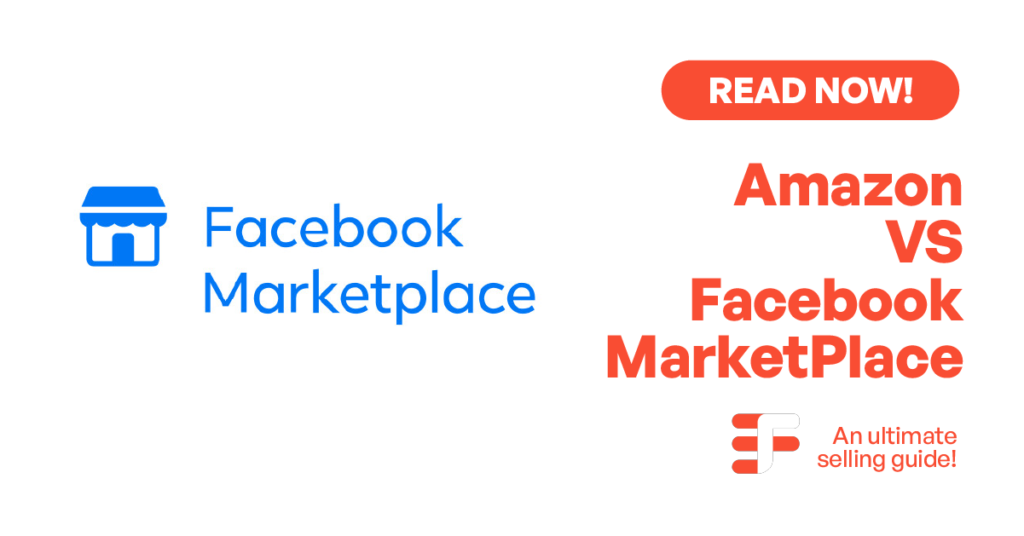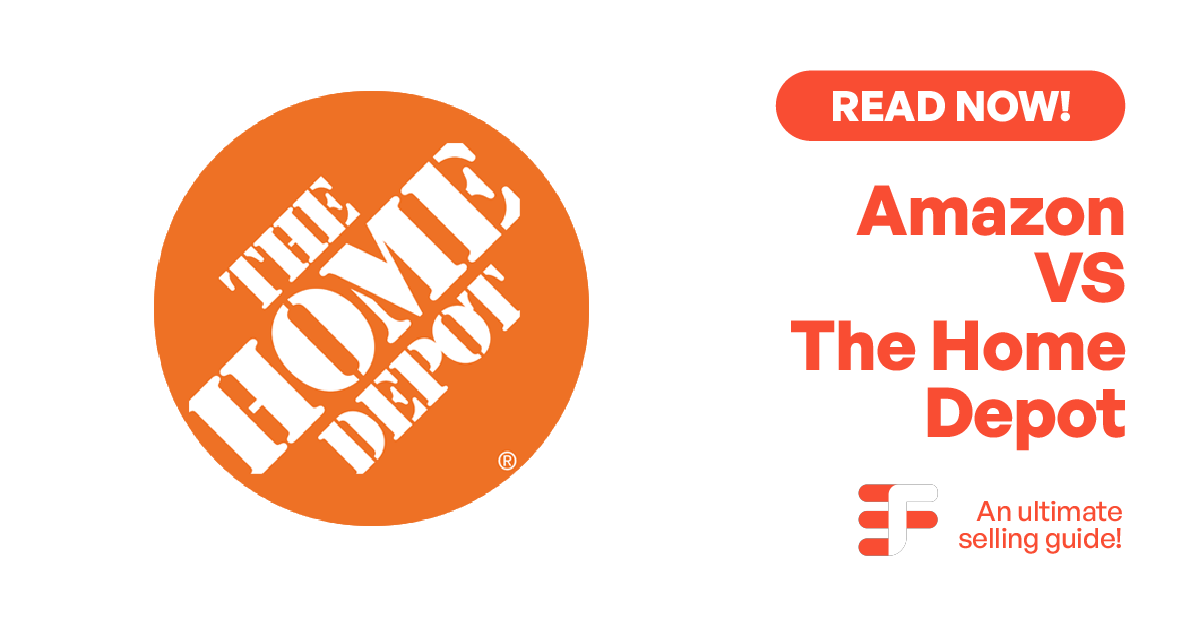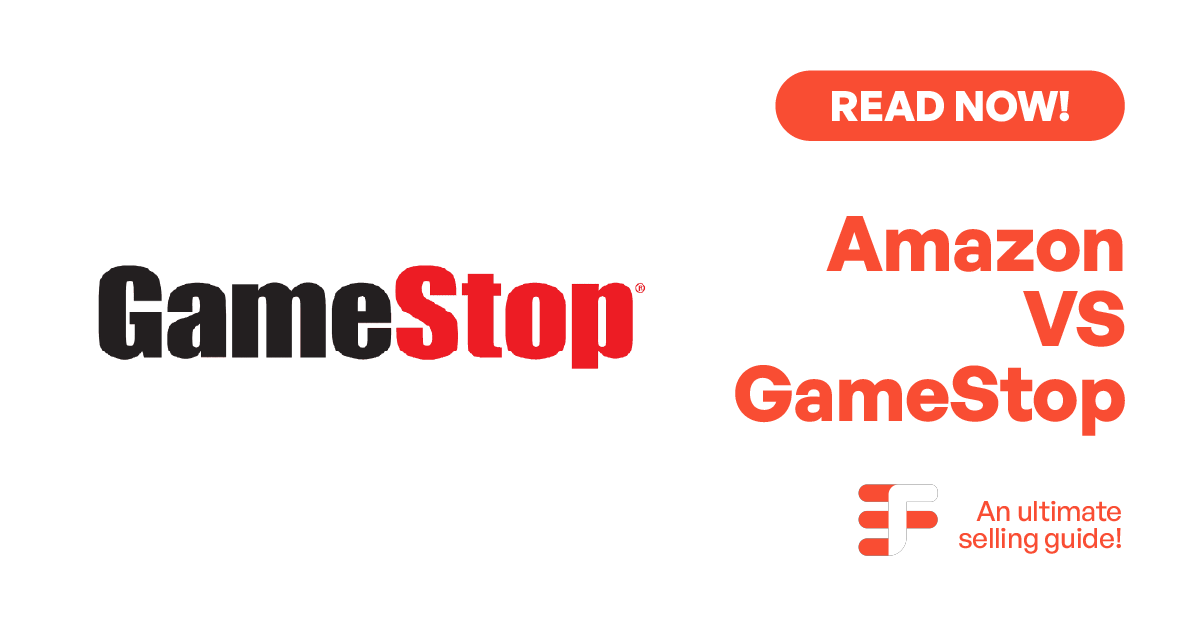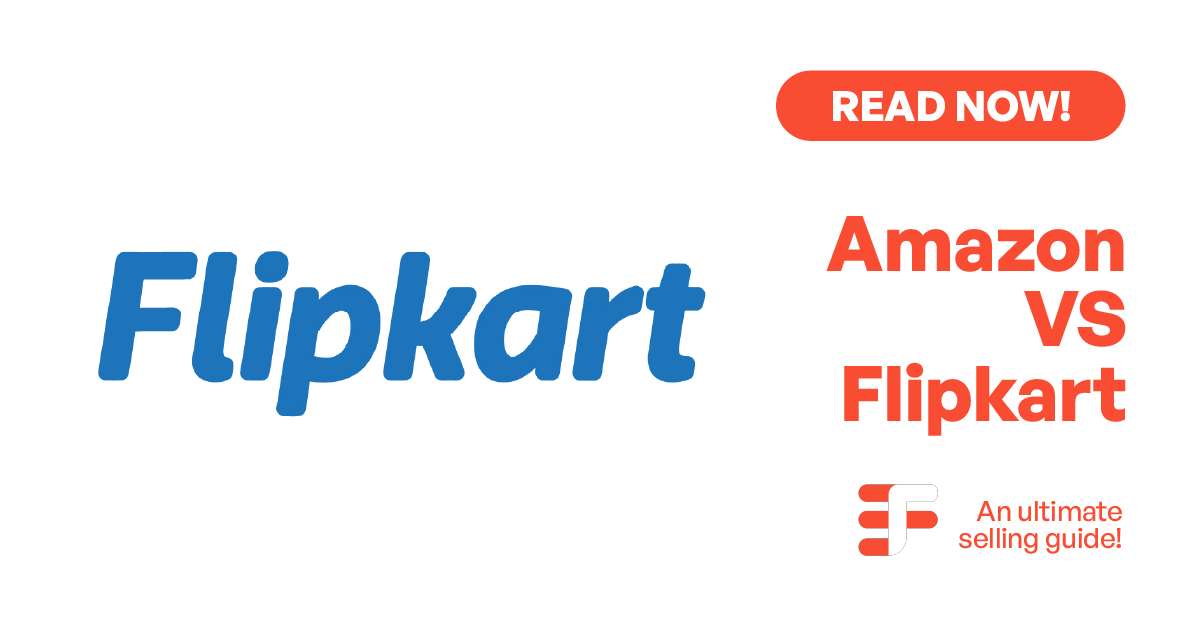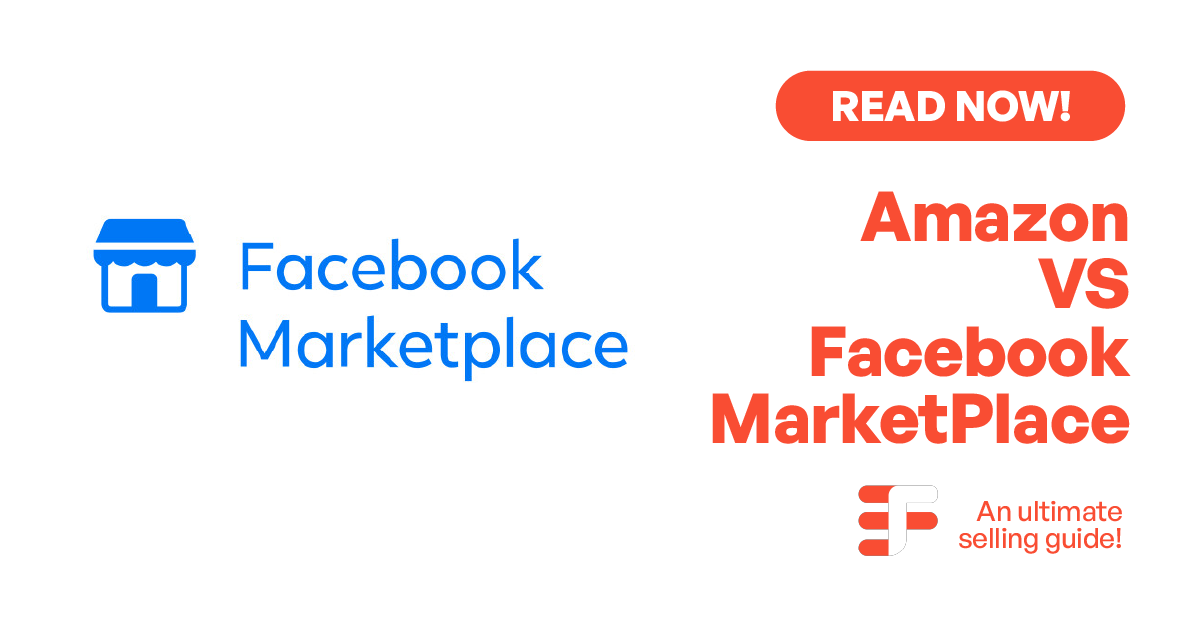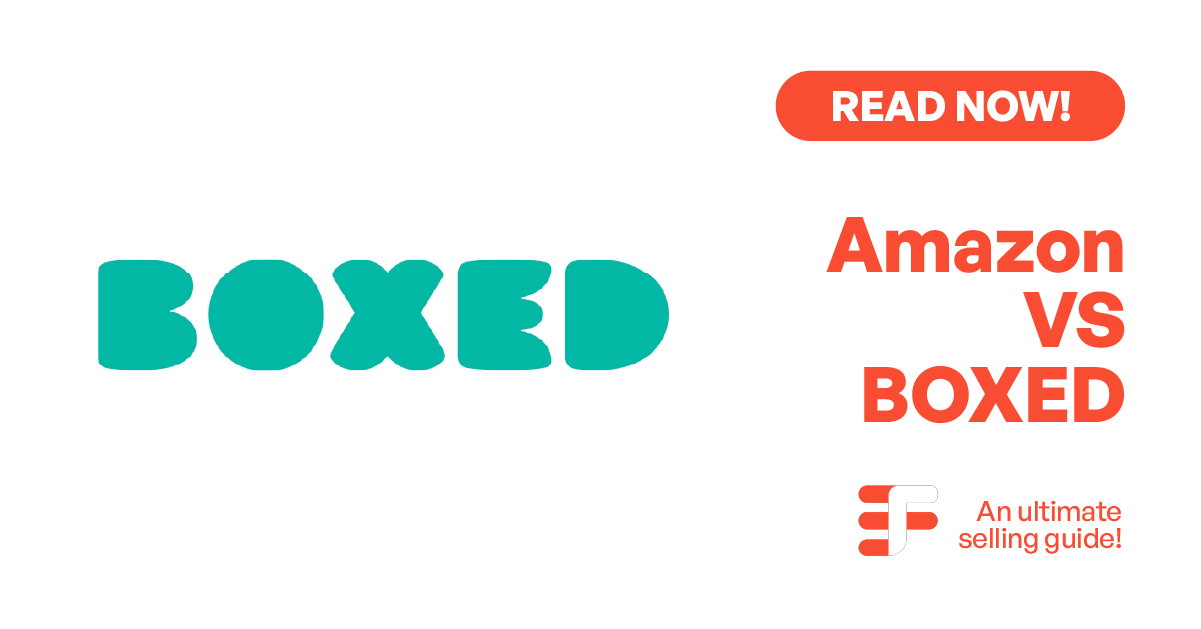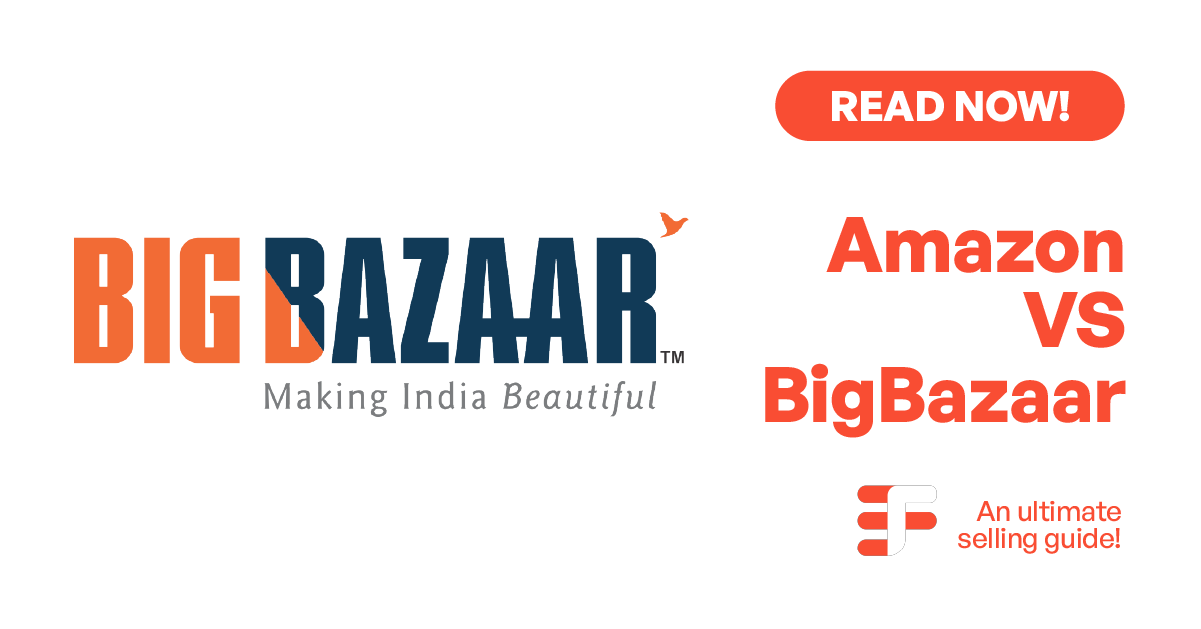When choosing between Amazon and Facebook Marketplace, sellers must consider several factors to determine the best platform for their business. Amazon offers a massive, global customer base, advanced fulfillment options through FBA (Fulfillment by Amazon), and strong tools for scaling businesses. It’s ideal for sellers looking for streamlined logistics and access to a vast audience.
Amazon boasts a vast customer base. In 2023, Amazon Marketplace vendors sold $480 billion in merchandise, accounting for 83.5% of Amazon’s net sales. The platform has 1.9 million active sellers, with an average seller making $250,000 in sales that year.
On the other hand, Facebook Marketplace provides a more localized, community-driven platform with fewer fees, offering greater control over pricing and communication.
Facebook Marketplace leverages its social media network to connect buyers and sellers. Approximately 34% of global social media users engage with Facebook Marketplace or Instagram Shopping Bag.
Table of Contents
ToggleOverview
Amazon is a global e-commerce giant with over 1.9 million active sellers and billions in annual sales. It provides a variety of tools and services, including Fulfillment by Amazon (FBA), which allows sellers to store inventory in Amazon’s warehouses and have it shipped directly to customers. This helps streamline logistics and ensures fast delivery, which is highly valued by consumers.
Amazon’s robust advertising platform also allows sellers to promote their products to a wide audience, boosting visibility and sales. However, it also comes with higher fees, including referral fees, storage fees, and FBA fees, which can eat into profits. Amazon is ideal for established businesses looking for scalability and global reach, but sellers must compete with other vendors and Amazon’s own private-label products.
Facebook Marketplace
Facebook Marketplace is a local, community-driven platform where individuals and businesses can sell products directly to local buyers. It’s free to list items, and sellers can set their own prices, without the commission fees typically associated with larger platforms. With over 2.9 billion active users, Facebook Marketplace offers access to a massive audience, although most transactions are geographically local.
Sellers have the advantage of being able to communicate directly with buyers, which can help build trust and foster personalized customer relationships. It’s especially suitable for businesses offering second-hand goods, furniture, home decor, or local services. However, without fulfillment support like Amazon, sellers must manage shipping or arrange for in-person pickup, making it less suited for large-scale businesses or those looking for international reach.
Facebook Marketplace leverages its vast social network, allowing sellers to connect directly with buyers. It has lower fees (5%) and is great for local sales. However, it lacks advanced seller tools, has limited product categories, and relies on direct communication for transactions. It’s ideal for small businesses and casual sellers.
Product line
Amazon’s product line is vast and includes everything from books and electronics to clothing, groceries, and home goods. Sellers can offer products across nearly every category, with the option to sell new, used, or refurbished items. With services like Fulfillment by Amazon (FBA), sellers can efficiently handle logistics and take advantage of Amazon’s global shipping network. The platform also provides tools for product advertising and promotions to help boost visibility and sales.
| Amazon Product Categories | Description |
| Electronics | Includes gadgets like smartphones, laptops, cameras, and smart home devices. Sellers can offer both branded and generic electronics. |
| Books | A wide selection of books, from fiction and non-fiction to textbooks and e-books. Sellers can list new, used, or rare books. |
| Clothing & Accessories | Fashion items for men, women, and children, including apparel, shoes, jewelry, and watches. Sellers can also offer accessories like bags and scarves. |
| Home & Kitchen | Furniture, kitchen appliances, décor, bedding, and storage solutions. Sellers can offer products for home improvement and organization. |
| Toys & Games | Includes toys for all age groups, from educational toys to board games and outdoor play items. Great for sellers targeting families and children. |
| Health & Personal Care | Products like skincare, hair care, vitamins, supplements, and personal hygiene items. Sellers can offer both branded and private-label wellness products. |
| Sports & Outdoors | Gear for fitness, camping, hiking, and other outdoor activities. This includes clothing, equipment, and accessories for various sports. |
| Beauty & Grooming | Beauty products, cosmetics, hair tools, and skincare items. A large space for personal care brands and sellers offering beauty-related products. |
| Groceries & Gourmet Food | Food and beverages, including pantry staples, specialty foods, organic items, and snacks. Sellers can provide fresh or packaged goods. |
| Automotive | Car accessories, parts, tools, and maintenance products. Sellers can target vehicle owners with a range of car-related products. |
Facebook Marketplace
Facebook Marketplace is ideal for local selling, offering a range of product categories like furniture, electronics, and vehicles. Sellers can list second-hand or gently used items such as home décor, clothes, and appliances, often at competitive prices. The platform also features categories like toys, baby products, and sporting goods, catering to a wide variety of buyers. Its emphasis on local transactions makes it great for quick sales and community-based connections.
| Categories | Description |
| Handmade Goods | Unique, handcrafted items such as jewelry, clothing, art, home décor, and accessories. Ideal for artisans or crafters selling their creations. |
| Vintage Items | Items that are at least 20 years old, including clothing, accessories, home goods, and collectibles. Sellers offer curated vintage collections. |
| Craft Supplies & Tools | Materials and tools for arts and crafts, such as beads, fabrics, knitting supplies, and patterns. Ideal for hobbyists and DIY projects. |
| Jewelry | Handcrafted and vintage jewelry, including rings, necklaces, earrings, and bracelets. Sellers can offer unique designs or vintage pieces. |
| Art & Collectibles | Original artwork, prints, sculptures, and unique collectibles. Etsy is popular for artists selling their work, including digital downloads. |
| Wedding & Party | Handmade wedding items, party décor, invitations, and personalized gifts. Sellers often cater to couples seeking unique, custom products. |
| Clothing & Accessories | Custom-made or vintage clothing, shoes, bags, scarves, and hats. Etsy is a popular platform for unique and personalized fashion items. |
| Home & Living | Custom-made or vintage home décor, kitchenware, bedding, and furniture. Sellers can offer personalized and creative home products. |
| Toys & Games | Handmade or vintage toys, dolls, games, and puzzles. Ideal for sellers targeting collectors or parents seeking unique items for children. |
| Beauty & Self-care | Organic, handmade beauty products like soaps, lotions, and skincare items. Many sellers create custom beauty and wellness offerings. |

Business Model
Amazon operates on a hybrid business model that integrates B2C (Business to Consumer), C2C (Consumer to Consumer), and B2B (Business to Business) models. As the world’s largest online retailer, Amazon serves as a marketplace for third-party sellers while also operating its own retail operations. The company generates revenue through multiple streams, making it a comprehensive e-commerce giant.
- Direct Retail (1P Model): In this model, Amazon directly sells products across various categories, such as electronics, books, clothing, and home goods. Amazon purchases items in bulk from suppliers, warehouses them in its fulfillment centers, and sells them to customers at a markup. This revenue stream is significant, as Amazon also leverages its advanced logistics infrastructure to offer fast, reliable delivery options, especially with its Prime membership.
- Third-Party Seller Platform (3P Model): The majority of products on Amazon are sold by third-party sellers through Amazon’s marketplace. In this model, sellers list their products on Amazon’s platform, and Amazon facilitates the transaction. Amazon earns a commission, or “referral fee,” for each sale made, typically ranging from 6% to 45%, depending on the product category. This model is highly scalable, enabling small businesses to reach Amazon’s massive global audience. Additionally, third-party sellers can choose to use Amazon’s Fulfillment by Amazon (FBA) service, where Amazon handles storage, shipping, and customer service.
- Amazon Web Services (AWS): Amazon has successfully diversified beyond retail with its cloud computing platform, AWS. AWS offers a range of cloud-based services, including computing power, storage, and machine learning tools. AWS generates significant revenue and profits for Amazon, allowing it to invest in new technologies and expand its retail operations further.
- Prime Membership: Amazon also generates consistent revenue through its subscription-based Prime membership, which offers perks such as free two-day shipping, exclusive deals, and access to streaming services. Prime has millions of subscribers worldwide, contributing to Amazon’s stable income.
Facebook Marketplace
Facebook Marketplace operates primarily on a C2C (Consumer to Consumer) model, allowing individuals to buy and sell products within their local communities. It’s a peer-to-peer platform that provides a digital space for users to list used or new items without the need for traditional e-commerce intermediaries. Facebook does not directly facilitate transactions or handle payments, but instead enables sellers and buyers to connect through its platform, where they can negotiate, communicate, and finalize deals.
- Free Listings: Facebook Marketplace allows sellers to list their products for free, which is a significant advantage for individuals or small businesses looking to sell items with minimal overhead costs. Sellers can create product listings with descriptions, images, and prices, which are then visible to other users within a specified geographic area. This free model encourages sellers to engage and participate in the marketplace, increasing the platform’s listings and overall activity.
- Local Focus and Peer-to-Peer Transactions: One of the key features of Facebook Marketplace is its emphasis on local transactions. The platform encourages buyers and sellers to interact within their immediate vicinity, which helps facilitate in-person exchanges, such as the buying and selling of second-hand furniture, clothing, or vehicles. This local nature of the platform eliminates the need for shipping, making it attractive for those looking to sell bulky items or engage in cash-based, face-to-face transactions.
- Additional Features for Businesses: Facebook Marketplace also caters to businesses by allowing them to set up business profiles and list their products. While businesses must still abide by the platform’s policies, they have the opportunity to reach local customers effectively. Facebook also provides optional advertising options for businesses to promote their listings and increase visibility. This creates an additional revenue stream for Facebook through targeted ads, particularly for businesses wanting to boost their presence on the platform.
- Minimal Fees: Unlike traditional e-commerce platforms like Amazon or eBay, Facebook Marketplace typically doesn’t charge transaction fees for local sales. However, for certain types of transactions, such as shipping or selling high-value items, Facebook charges a small fee to cover its costs. This fee is relatively lower compared to other platforms, making it an attractive option for both individuals and small businesses.
Overall, Facebook Marketplace offers a low-cost, local-focused business model that facilitates peer-to-peer transactions while also allowing businesses to leverage the platform for broader reach through advertising.
Marketing Strategies
Amazon Sponsored Ads
Amazon Sponsored Ads allow sellers to pay for prime placement in search results, boosting visibility and sales. These ads work on a pay-per-click model, ensuring cost efficiency for sellers. By appearing at the top, products gain more exposure and conversions. This strategy helps sellers compete in a crowded marketplace.
Amazon Prime for Customer Retention
Amazon Prime offers perks like free shipping, streaming access, and exclusive deals, encouraging long-term customer loyalty. Members are more likely to shop frequently, increasing their lifetime value. The subscription model generates consistent revenue for Amazon while enhancing customer satisfaction. This strategy strengthens Amazon’s competitive advantage.
Social Proof Through Reviews
Amazon leverages customer reviews and ratings to build trust and influence purchasing decisions. Highly rated products appear more credible, leading to increased sales. Verified reviews provide authentic feedback, helping new buyers make informed choices. This system benefits both sellers and customers.
Personalized Recommendations
Amazon’s recommendation engine suggests products based on browsing history and past purchases. This personalized approach enhances the user experience and drives impulse buying. AI-driven algorithms ensure relevant product suggestions, increasing engagement. It helps sellers reach potential customers efficiently.
Affiliate Marketing with Amazon Associates
Amazon Associates allows websites and influencers to promote Amazon products for a commission. This expands Amazon’s reach through third-party marketing efforts. Affiliates drive external traffic to Amazon, boosting sales and brand visibility. This program benefits both Amazon and content creators.
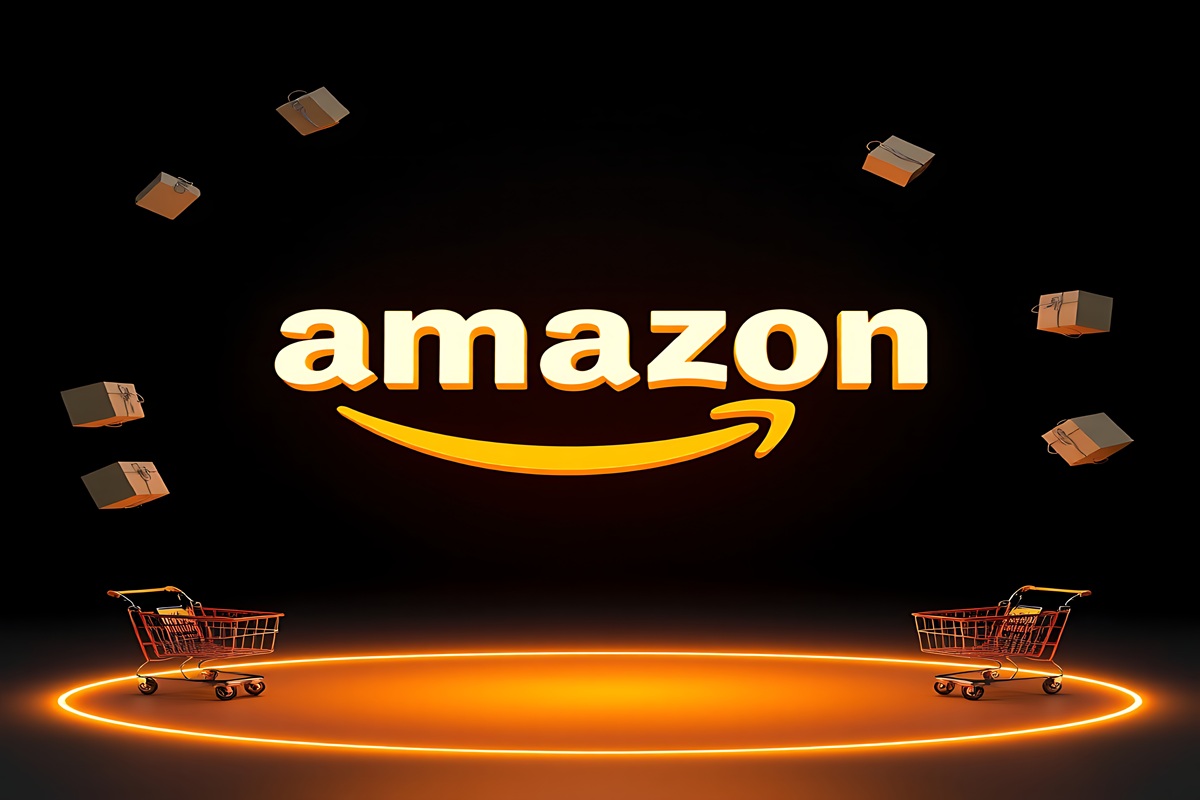
Facebook Ads for Targeted Marketing
Facebook Ads use advanced targeting options, allowing businesses to reach specific audiences based on demographics, interests, and behaviors. Advertisers can create highly customized campaigns to drive engagement and sales. The platform offers multiple ad formats, including carousel, video, and story ads. This data-driven approach maximizes return on investment (ROI).
Facebook Marketplace for Organic Sales
Facebook Marketplace enables individuals and businesses to sell products directly to local buyers. It provides a cost-effective way to reach customers without upfront advertising fees. The platform supports product listings with descriptions, images, and direct messaging for easy communication. This makes it ideal for small businesses and casual sellers.
Influencer and Community Marketing
Facebook leverages influencer marketing by allowing creators to promote products through pages and groups. Brands collaborate with influencers to reach a broader audience and increase trust. Community-driven marketing through Facebook Groups helps businesses engage directly with niche audiences. This enhances brand loyalty and organic reach.
Personalized Shopping Experience
Facebook’s AI-driven algorithms personalize the shopping experience based on user behavior. Recommendations appear in the feed, Marketplace, and Facebook Shops. Dynamic ads retarget potential buyers who previously viewed products. This strategy increases conversion rates and enhances customer engagement.
Facebook Shops for Seamless E-Commerce
Facebook Shops allow businesses to create a custom storefront on Facebook and Instagram. It enables direct purchases within the platform, reducing friction for buyers. Shops integrate with payment solutions, making transactions seamless. This feature helps businesses establish a social commerce presence effortlessly.
Reporting Analyses
Amazon has introduced advanced analytics tools to help sellers make data-driven decisions. The Customer Loyalty Analytics Dashboard tracks repeat purchases and customer lifetime value, improving engagement strategies. Custom Analytics offers pre-built templates for tailored reports, making it easier to monitor sales and inventory.
Additionally, Amazon’s upcoming Customer Journey Analytics (launching in 2025) will provide insights into the entire shopping experience, from discovery to purchase. These innovations empower sellers to optimize marketing, refine product strategies, and boost conversions.
Facebook Marketplace
Facebook Marketplace offers limited built-in analytics; however, sellers can utilize Meta Business Suite Insights to gain valuable data. This tool provides metrics on reach, engagement, and audience demographics, helping sellers understand their performance.
Additionally, Facebook Ads Manager allows tracking of ad performance, including impressions, clicks, and conversion rates. For more comprehensive analysis, third-party tools like Hootsuite and Sprout Social offer advanced features such as sentiment analysis and competitor benchmarking. These resources enable sellers to make informed decisions and optimize their marketing strategies.
Account Creation
To create an Amazon seller account, visit Amazon Seller Central,
- Visit Amazon Seller Central
Go to Amazon Seller Central and select whether you want an Individual or Professional account based on your business needs.
- Enter Business Details
Provide your business name, address, and contact information.
- Provide Financial Information
Submit your bank details, tax ID, and verify your identity for security.
- Start Selling
Once approved, you can begin listing products, managing inventory, and accessing marketing tools to boost sales.
Facebook marketplace
- Log into Your Facebook Account
Start by logging into your Facebook account.
- Access Marketplace
Click on the Marketplace icon to open the selling section.
- Create Listings
Add product photos, write descriptions, and set pricing for your items.
- Start Selling
No formal registration is needed, and there are no monthly fees for individual sellers to use the platform.
Conclusion
Amazon and Facebook Marketplace offer different approaches to account creation. Amazon requires a more formal registration process with business verification, ideal for serious sellers aiming for a global audience. In contrast, Facebook Marketplace’s easy setup is perfect for local, casual sellers with no upfront costs or complex registration. Both platforms have unique strengths depending on your business goals.
FAQs
- Which platform is best for beginners?
Amazon and eBay are great for beginners due to their extensive support, resources, and large customer base. Facebook Marketplace is also a good entry point for local, casual sellers.
- How do I promote my listings?
Amazon uses paid ads and Prime services, Facebook offers targeted ads and social media integration, eBay has promoted listings, and Etsy uses both internal ads and social media marketing to boost visibility.
- What fees are associated with selling on these platforms?
Amazon charges fees based on product category and fulfillment options, Facebook Marketplace has minimal fees, eBay charges listing and final value fees, and Etsy charges listing, transaction, and payment processing fees.
- Can I sell internationally on these platforms?
Amazon, eBay, and Etsy support international sales, though shipping and customs may vary. Facebook Marketplace is more localized but offers some shipping options for broader reach.
- Can I sell internationally on Facebook Marketplace?
Facebook Marketplace is mostly focused on local transactions, making it less suitable for international sales compared to Amazon.
- How do Amazon fees compare to Facebook Marketplace fees?
Amazon has higher fees, including referral and FBA fees, while Facebook Marketplace has minimal fees, especially for local transactions.

